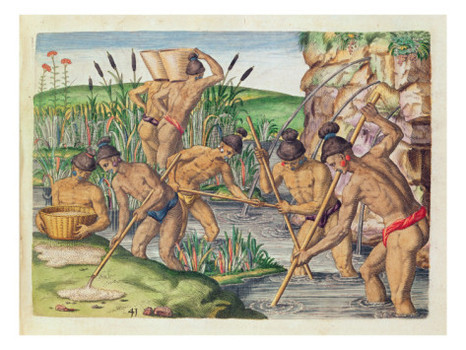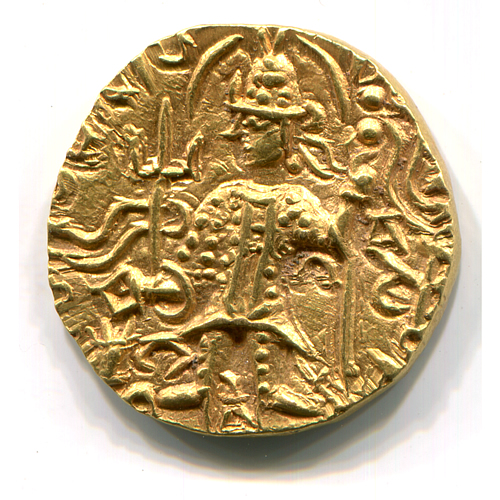

When archaeologists talk about early human history the metals they mention most are bronze and iron. Each of these metals, when people learned to work with it, helped with a great leap forward in technology. Some experts are now adding copper to the list – the Bronze Age was preceded by a period when the secret of adding tin hadn’t yet been discovered, and that’s now becoming known as the Copper Age.

There are two other metals that have played a huge role in human history though – gold and silver. Neither of these has an age named after it. That’s because they’ve been equally important in almost every age. From their earliest use as jewelry and ornamentation they gained importance as some of the earliest currencies, and went on to become the basis of the world financial system. Today they remain popular investments for their scarcity value as well as having an ever-growing range of industrial uses.
Both gold and silver, like all other heavy elements, are produced when old stars explode in a supernova. Solar systems like ours are formed when the debris from these huge explosions is drawn together by gravity, and large quantities of gold and silver are among the debris. For billions of years they waited in the rocks, until finally humans came along and began mining. Even before our ancestors began to dig, though, they were aware of gold.
Most of the metals we use aren’t found naturally in their pure forms – they have to be extracted from other minerals. Gold is different. It’s one of the least reactive elements, so it’s usually found in its pure state. It’s likely that early man sometimes found bright, shining nuggets of it on riverbeds, and picked them up out of curiosity. They would then have found that, as the most easily worked of all metals, it could be beaten into different shapes. The oldest gold jewelry ever discovered is believed to be over 8,000 years old.
Early civilizations worked on a barter system, but as small villages began to grow into large towns that became inconvenient. Gold was both desirable and rare, and it slowly started to be used as an early currency. Later, in ancient Greece, it began to be made into standard sized coins.
Like gold, silver is sometimes found as a pure metal. It’s also found mixed with other metals, and as people learned to extract them they found themselves with quantities of silver too. It was less highly prized than gold but still rare and desirable, so it began to be used as money too. The first silver coins were made by the Lydians, in what’s now Turkey, about 700BC.

The Romans developed new ways of mining both gold and silver, which allowed them to produce far more than anyone before them, and they also ruled a huge empire with a highly developed trade network. Barter all but disappeared and a highly organized system of currency emerged. Roman coins spread throughout the world and were accepted almost everywhere. When the Roman Empire finally declined kingdoms began making their own coins to replace the Roman ones, but gold and silver remained the metals of choice.
In 1821 Great Britain adopted the gold standard, pegging the worth of their currency to the value of gold. Now coins – and the new bank notes – didn’t usually contain any precious metals and had no real worth of their own, but were backed by real gold reserves. Other countries quickly moved to this system. Real gold continued to play its part, in the shape of coins like the English sovereign, the American gold eagle and the German gold mark. Other countries adopted silver as the standard, and there were several attempts to link the two. Both standards worked on the same principle though – notes and coins carried a promise that they could be exchanged for a quantity of real metal of equal worth.
The gold standard was the basis of the international currency system until the First World War, when the British Empire abandoned it in order to print more money. After 1918 the system never really recovered, although the USA managed to maintain a modified gold standard until 1971. There were many economic reasons for abandoning the gold standard – it restricted the ability of governments to influence the money supply or alter exchange rates. Gold and silver didn’t lose their value though – in fact in many ways they became even more desirable.
Gold and silver have been used to make jewelry for thousands of years; the oldest piece of gold jewelry ever found is believed to be over 8,000 years old. They haven’t lost any of their popularity. From the death masks of the Egyptian Pharaohs to medieval crowns and modern wedding rings, precious metals remain sought after – and that means they’re still valuable. Gold and silver are also both excellent conductors of electricity and have many uses in electronic devices, pushing prices up even higher. There’s a limited supply of these metals, but an ever increasing demand. That gives them even more scarcity value than before, and as a result they’re an excellent investment.
Unlike investments based on the share price of a company that could run into problems or even fail, gold and silver are real commodities that will always be in demand. When you buy metal you’re buying something real. That’s very reassuring when the economy isn’t performing well – you have a guarantee that no matter what happens you will still own something of value. In fact the security of gold and silver means that they become even more desirable in difficult times, and that pushes prices up. If you want to make a profit when things look bad, gold and silver are one of your best options.
The modern economy bears no resemblance to the trading systems of the Greek or Roman world, still less to the ancient markets where the first farmers bartered their crops. Gold and silver are every bit as important now as they were then, though. They’ve been highly valued for the whole length of human history, and as long as that continues they’ll remain an excellent investment.
Next Page → : Value of all Gold in the World